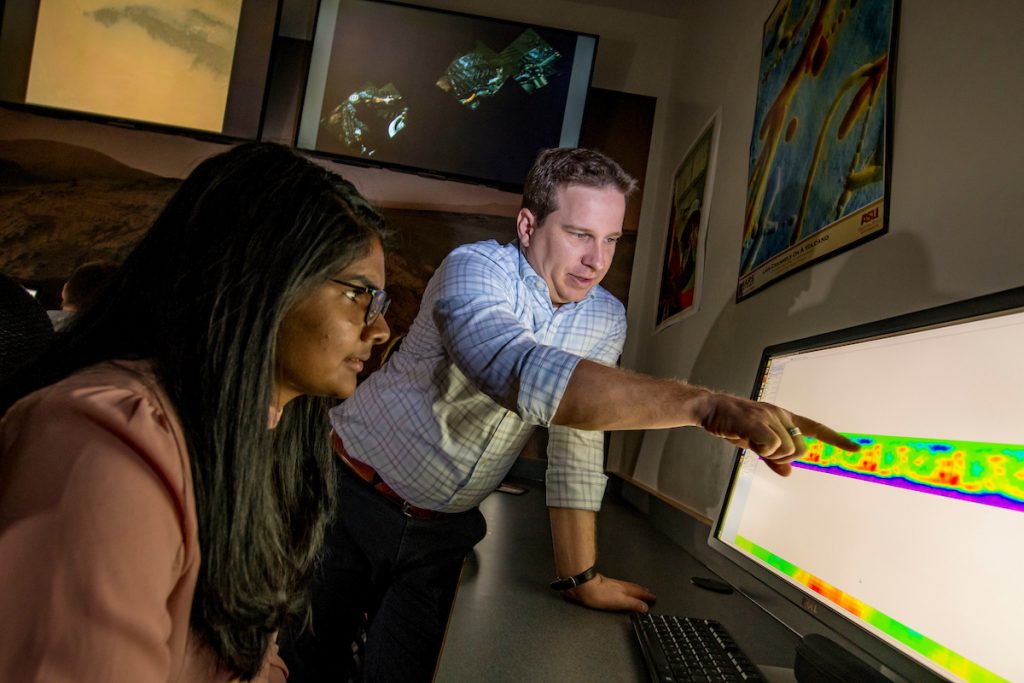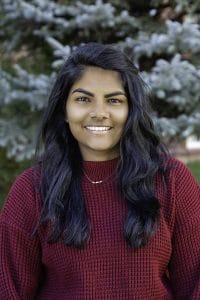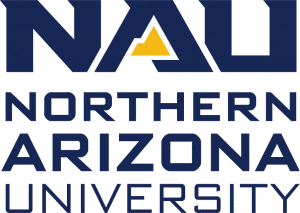
Dec. 6, 2018
Since she was 12 years old, Heshani Pieris has stared into the sky, wondering what the different planetary bodies were made of, whether life existed elsewhere and how the planets, stars, sun, comets and asteroids interacted with each other. She didn’t just want answers to her questions, though; she wanted to find the answers herself through telescopes, Mars rovers and data.
Thus, when the time came for her to attend college, she took a leap—a 9,425-mile leap from her humid coastal hometown of Colombo, Sri Lanka, to the forested mountain home of Northern Arizona University to study physics and astronomy, starting a process that will define her career.
Fortunately, in addition to learning about Mars and other planetary surfaces, Pieris learned she loved winter, even as she missed her family, her dog and her mother’s Sri Lankan cooking.
She also loved NAU. The December 2018 graduate said the close-knit community on campus helped her settle into her new environment, and the small classes allowed her to seek out professors to discuss not only what she learned in class but also her resume, graduate school applications and other issues. In fact, Pieris credits two faculty members, both in the Department of Physics & Astronomy, who played a significant role in her success at NAU.
Pieris was a teaching assistant for instructor Lisa Chien, who, like Pieris, had once been an international student in the United States, thousands of miles from her home and family in Taiwan. She talked about this with her students, sharing her experiences and encouraging Pieris to interact with other professors in the department and look into research opportunities.
“Having a close relationship with a professor who had taken the same journey as me to come study in the U.S. and who is now one of the most loved and looked up to professors in our department is truly inspiring, and I aspire to be a strong woman figure like her one day,” Pieris said.
Chien is confident Pieris will do just that.
“Heshani is absolutely one of the best students I have ever mentored,” she said. “It is truly remarkable how well she manages her life and academic work at such a young age and as an international student. She has achieved some of the highest recognitions in the College of the Environment, Forestry, and Natural Sciences and NAU, and I am excited about her bright future as a scientist. She is truly an inspiring woman to everyone.”
Chien’s encouragement led Pieris to Christopher Edwards’ lab. Edwards, an assistant professor of planetary science, is part of the  Mars Curiosity rover program and also studies planetary surfaces, how planets were created and how the geology and atmospheres of planets continue to evolve.
Mars Curiosity rover program and also studies planetary surfaces, how planets were created and how the geology and atmospheres of planets continue to evolve.
“I was very lucky to be accepted into Dr. Edwards’ research group, and the attention he gives to each and every member of his group is truly inspiring,” Pieris said. “His interests always lie in bettering his students’ progress, and he takes this as a personal duty. His passion for what he does is what inspired me to further pursue my higher studies in planetary surfaces as well.”
Pieris’ research project—obtaining a thermal inertia pattern for different geological settings on the Martian surface—gave her experience that combines physics theories and astronomy concepts as well as experience in programs like Linux, JMars and Davinci. Those skills will translate directly into her research in graduate school. Her goal now is to observe planetary surfaces for characteristics that indicate the potential to sustain life, which she said her experience at NAU has prepared her to do. Edwards agreed.
“Over my time working with Heshani, I’ve seen her grow from an intelligent undergraduate student to a dedicated researcher,” Edwards said. “I’m confident Heshani will succeed in her future graduate school endeavors and I couldn’t be prouder to have her as a student.”
After graduation, Pieris wants to work as an Optional Practical Training student under a planetary scientist at NAU or Lowell Observatory before starting a doctoral degree in planetary science, with a goal of researching planetary bodies like Europa (moon of Jupiter), Titan and Enceladus (moons of Saturn).
 Heidi Toth | NAU Communications
Heidi Toth | NAU Communications
(928) 523-5556 | heidi.toth@nau.edu